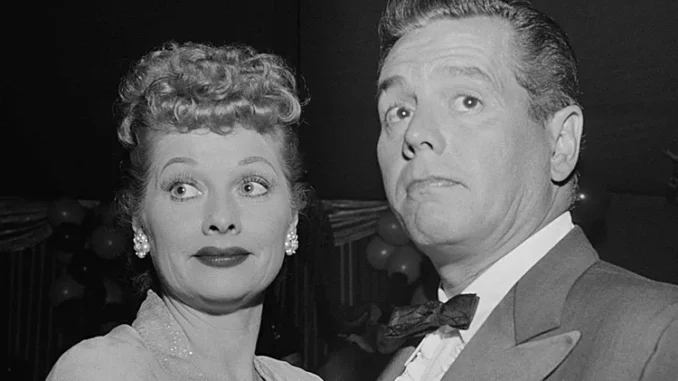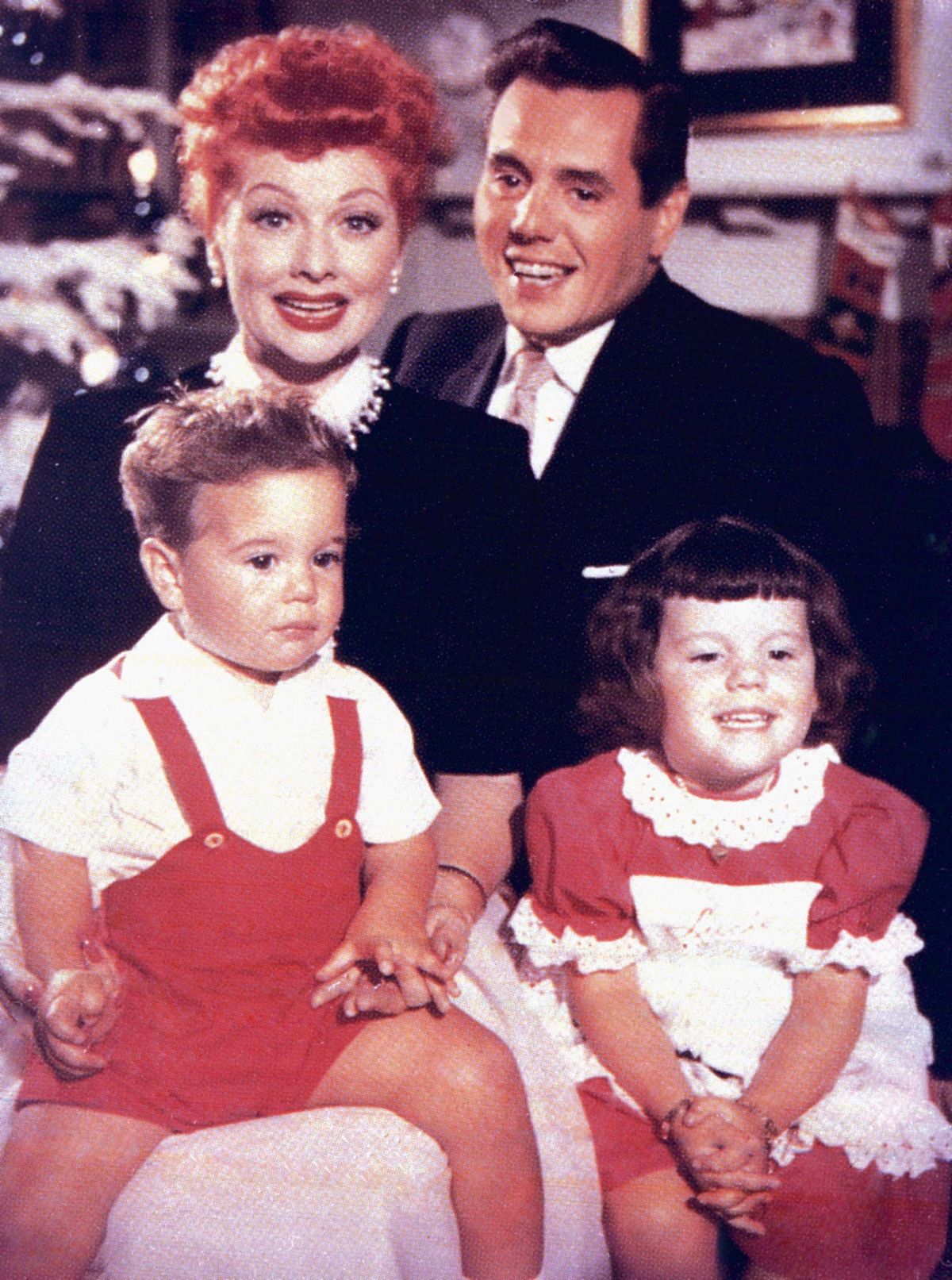
When I Love Lucy premiered in 1951, it quickly became one of the most beloved sitcoms in American television history. But behind the laughter and the groundbreaking comedy, Lucille Ball and Desi Arnaz faced a moment that would forever change television — a fight to keep the show on the air after Lucille became pregnant.
At a time when television executives considered pregnancy too “controversial” for audiences, Lucille Ball and Desi Arnaz refused to back down. Their determination not only challenged outdated norms but also created one of the most iconic and culturally significant moments in TV history.
A Groundbreaking Moment in Television
In 1952, I Love Lucy was in its second season and dominating ratings. Lucille Ball, who played the hilarious and ever-scheming Lucy Ricardo, learned that she was expecting her second child with her husband and co-star, Desi Arnaz. However, the news was met with hesitation from CBS executives.
At that time, pregnancy was rarely, if ever, shown on television. The word “pregnant” was considered too suggestive to be spoken on air, and producers worried that audiences would find it “indecent” or “uncomfortable.”
Desi Arnaz, who also served as the show’s producer through Desilu Productions, fought to change that. He argued that millions of American women were pregnant and raising families — and that pretending otherwise was dishonest.
“We wanted to show life as it really was,” Arnaz said years later. “If people love Lucy, they’ll love her even when she’s expecting.”
After intense debates, CBS and the show’s sponsor, Philip Morris, reluctantly agreed — with one condition: the scripts could not use the word pregnant. Instead, they used the more “polite” phrase, “expecting.”
Art Imitated Life — and Made History
In a brilliant creative move, Ball’s real-life pregnancy was written into the show. Her character, Lucy Ricardo, also became pregnant, leading to the unforgettable storyline that would culminate in the birth of “Little Ricky.”
The episode “Lucy Is Enceinte” (the French word for “pregnant”) aired on December 8, 1952, marking the first time in television history that a character’s pregnancy was acknowledged onscreen. The storyline continued across several episodes, blending humor, tenderness, and realism in a way that captivated audiences.
When the episode “Lucy Goes to the Hospital” aired on January 19, 1953, it drew an estimated 44 million viewers — more than 70% of the entire U.S. television audience at the time. To put that in perspective, more Americans watched Lucy give birth to Little Ricky than watched President Eisenhower’s inauguration the following day.
That episode became one of the most-watched broadcasts in history and remains a defining cultural moment for television.

Breaking Barriers Beyond the Screen
The inclusion of Lucille Ball’s pregnancy wasn’t just a ratings triumph — it was a milestone for representation and women’s visibility in media. It showed that women could continue to work, lead, and make audiences laugh even while pregnant, defying the entertainment industry’s restrictive norms of the era.
Lucille Ball’s willingness to embrace her real-life experience onscreen also helped humanize her character in a profound way. Fans wrote letters praising her courage, many expressing how comforting it was to see a woman experiencing something so natural — and yet so rarely acknowledged — on television.
“Lucy made it okay to be a woman, a mother, and still be funny,” television historian Kathleen Brady wrote. “She turned pregnancy from a taboo into a triumph.”
Behind the scenes, the production of I Love Lucy also changed television forever. Desilu Productions pioneered the use of the three-camera filming system in front of a live audience, ensuring the episodes could be rerun in high quality — something almost unheard of at the time. That innovation laid the groundwork for the modern sitcom structure that would dominate for decades.
A Couple Ahead of Their Time
Lucille Ball and Desi Arnaz were not just TV stars — they were visionaries. Together, they built Desilu Productions, the first major studio owned by a woman in Hollywood. Beyond I Love Lucy, their studio would later produce legendary shows such as Star Trek and The Untouchables.
But their most personal and powerful legacy came from the moment they refused to let television hide something as natural as pregnancy. Their insistence on authenticity not only changed broadcast standards but also helped shape how women and families were portrayed in entertainment.
Even as Ball’s pregnancy storyline unfolded onscreen, she and Arnaz worked tirelessly behind the scenes to maintain the show’s comedic rhythm and charm. The scripts skillfully balanced humor with emotion — from Lucy’s hilarious cravings and wobbly dance scenes to her heartfelt conversations with Ricky about becoming parents.
The chemistry between Ball and Arnaz, already magnetic, reached new emotional heights as their real-life love and excitement translated perfectly into their fictional counterparts.
The Legacy of Lucy’s Fight
Looking back, I Love Lucy’s pregnancy storyline is widely recognized as a turning point in television history. It paved the way for shows like The Mary Tyler Moore Show, Murphy Brown, and Modern Family to tackle family and motherhood more openly.
Lucille Ball’s courage redefined what it meant to be a woman in Hollywood — proving that comedy, honesty, and motherhood could coexist beautifully on screen. Her boldness opened doors for generations of actresses who followed.
Even decades later, the impact of her decision continues to resonate. In 2022, during the 70th anniversary of the I Love Lucy “baby episode,” CBS re-aired it in color, reminding audiences of the timeless charm — and quiet revolution — behind Lucy Ricardo’s laughter.
“Lucy changed television,” Desi Arnaz once said simply. “And she did it by just being herself.”
